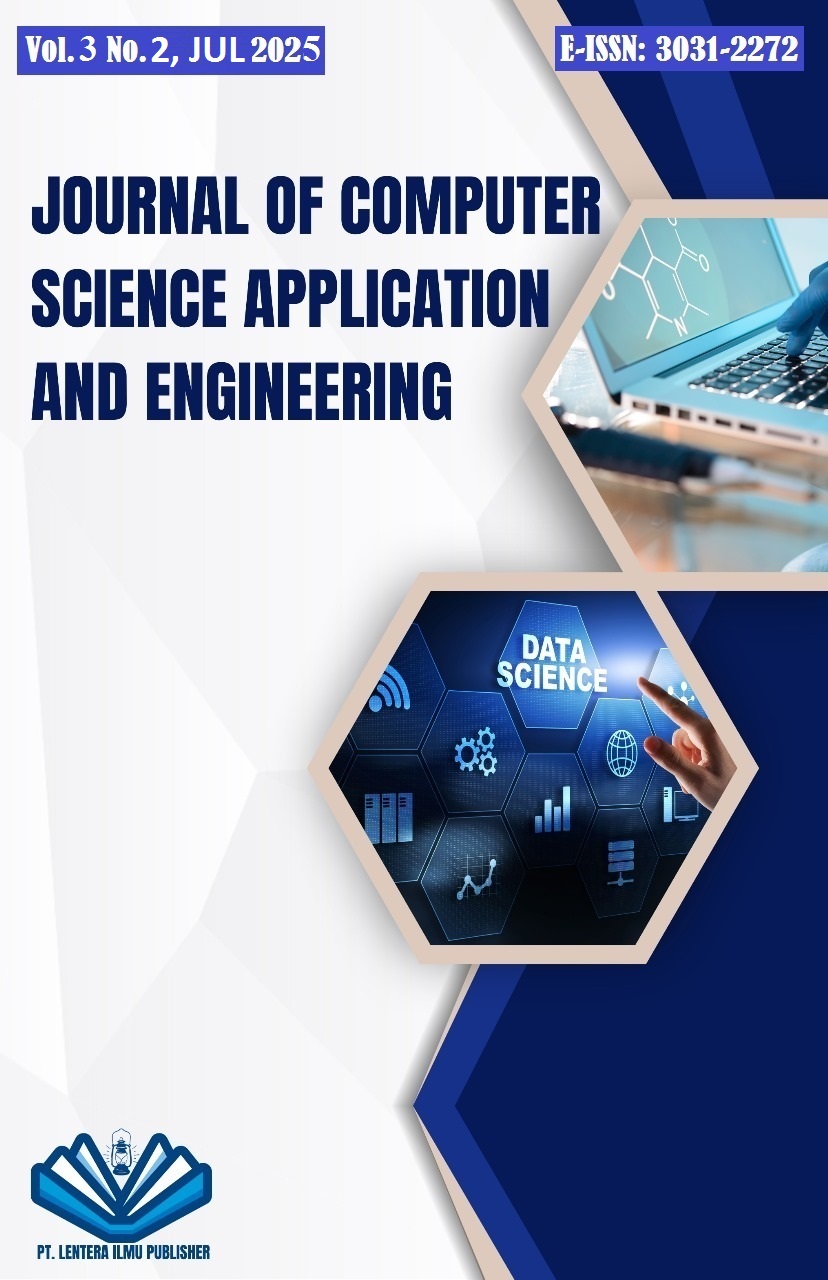Machine Learning-Based Route Optimization for Smart Urban Transportation Systems
DOI:
https://doi.org/10.70356/josapen.v3i2.65Keywords:
Route Optimization, Smart Urban Transportation, Machine LearningAbstract
Urban transportation systems face increasing challenges due to rapid population growth, traffic congestion, and unpredictable road conditions. Traditional routing algorithms like Dijkstra and A* are limited in their ability to respond to real-time events such as accidents, roadwork, or weather disruptions. This study aims to develop a smarter, more adaptive route optimization system using machine learning techniques. The goal is to enhance travel time accuracy, reduce congestion, and improve commuter satisfaction through intelligent, data-driven decision-making. The proposed method integrates supervised learning for travel time prediction and reinforcement learning for real-time route selection, using data from GPS trajectories, traffic flow, weather reports, and user behaviors. A grid-based environment is used for reinforcement learning simulations, while OpenStreetMap data supports city-level route optimization. Results show that the machine learning-enhanced model significantly outperforms traditional algorithms in terms of adaptability, responsiveness, and reliability. In particular, reinforcement learning proved effective in dynamic environments, learning optimal routes over time and adjusting to disruptions. This research contributes to the development of intelligent transportation systems and supports the broader vision of smart cities, where mobility is safer, faster, and more efficient through the power of AI and real-time data integration.
Downloads
References
S. S. Turay, C. A. Adams, and A. Ababio-Donkor, “Application of multi-class machine learning algorithms to predicting commuter preference & system benefits of an integrated public transport: The case of a proposed dedicated bus lane system,” Transp. Eng., vol. 20, no. March, 2025, doi: 10.1016/j.treng.2025.100319.
M. F. Bin Alam, A. B. M. M. Bari, S. R. Tushar, and K. M. A. Kabir, “An interval-valued Pythagorean fuzzy approach to mitigate traffic congestion in densely populated cities with implications for sustainability,” Decis. Anal. J., vol. 15, no. February, p. 100558, 2025, doi: 10.1016/j.dajour.2025.100558.
S. Mowri and A. Bailey, “Affects and assemblages of (un)safety among female bus commuters in Dhaka,” Geoforum, vol. 144, no. November 2022, p. 103802, 2023, doi: 10.1016/j.geoforum.2023.103802.
S. E. Bibri and J. Huang, “Artificial intelligence of things for sustainable smart city brain and digital twin systems: Pioneering Environmental synergies between real-time management and predictive planning,” Environ. Sci. Ecotechnology , vol. 26, p. 100591, 2025, doi: 10.1016/j.ese.2025.100591.
S. Saki and M. Soori, “Artificial Intelligence, Machine Learning and Deep Learning in Advanced Transportation Systems, A Review,” Multimodal Transp., p. 100242, 2025, doi: 10.1016/j.multra.2025.100242.
F. Mining, P. Control, and S. Republic, “ScienceDirect ScienceDirect Artificial Intelligence in Transportation : The Potential of ChatGPT Artificial Intelligence in Transportation : The Potential of ChatGPT,” Transp. Res. Procedia, vol. 87, no. Logi 2024, pp. 60–65, 2025, doi: 10.1016/j.trpro.2025.04.108.
O. Akda, “Enhancing electric vehicle range through real-time failure prediction and optimization : Introduction to DHBA-FPM model with an artificial intelligence approach,” vol. 11, no. March, pp. 547–558, 2025, doi: 10.1016/j.icte.2025.03.009.
M. Khairy, H. M. O. Mokhtar, and M. Abdalla, “International Journal of Cognitive Computing in Engineering Adaptive traffic prediction model using Graph Neural Networks optimized by reinforcement learning,” Int. J. Cogn. Comput. Eng., vol. 6, no. February, pp. 431–440, 2025, doi: 10.1016/j.ijcce.2025.02.001.
S. Bouktif, A. Cheniki, A. Ouni, and H. El-sayed, “Engineering Applications of Artificial Intelligence Parameterized-action based deep reinforcement learning for intelligent traffic signal control,” vol. 159, no. July, 2025.
Z. Huang, “Reinforcement learning based adaptive control method for traffic lights in intelligent transportation,” Alexandria Eng. J., vol. 106, no. June, pp. 381–391, 2024, doi: 10.1016/j.aej.2024.07.046.
J. Wang, Y. Liu, and M. Kwan, “Cross-validation between GPS-derived trajectories and activity-travel diaries for transport geography studies,” vol. 126, no. April, 2025.
J. Pre-proofs, “spoofing attack Prediction-based trajectory anomaly detection in UAV system with GPS spoofing attack,” Chinese J. Aeronaut., p. 103478, 2025, doi: https://doi.org/.
A. Omidkar, R. Es, and H. Song, “Cleaner Logistics and Supply Chain Predicting biomass transportation costs : A machine learning approach for enhanced biofuel competitiveness,” Clean. Logist. Supply Chain, vol. 16, no. July, p. 100252, 2025, doi: 10.1016/j.clscn.2025.100252.
Y. Zhang, S. Zhang, and V. Dinavahi, “A survey of machine learning applications in advanced transportation systems : Trends , techniques , and future directions,” eTransportation, vol. 24, no. March, p. 100417, 2025, doi: 10.1016/j.etran.2025.100417.
Y. Ji and H. Zheng, “International Journal of Applied Earth Observation and Geoinformation Configuration of public transportation stations in Hong Kong based on population density prediction by machine learning,” Int. J. Appl. Earth Obs. Geoinf., vol. 136, no. November 2024, p. 104339, 2025, doi: 10.1016/j.jag.2024.104339.
S. Zahid and U. Jamil, “Jo ur na l P re,” Green Energy Intell. Transp., p. 100303, 2025, doi: 10.1016/j.geits.2025.100303.
Downloads
Published
How to Cite
Issue
Section
License
Copyright (c) 2025 Adriel Moses Anson, Amirah

This work is licensed under a Creative Commons Attribution-ShareAlike 4.0 International License.










